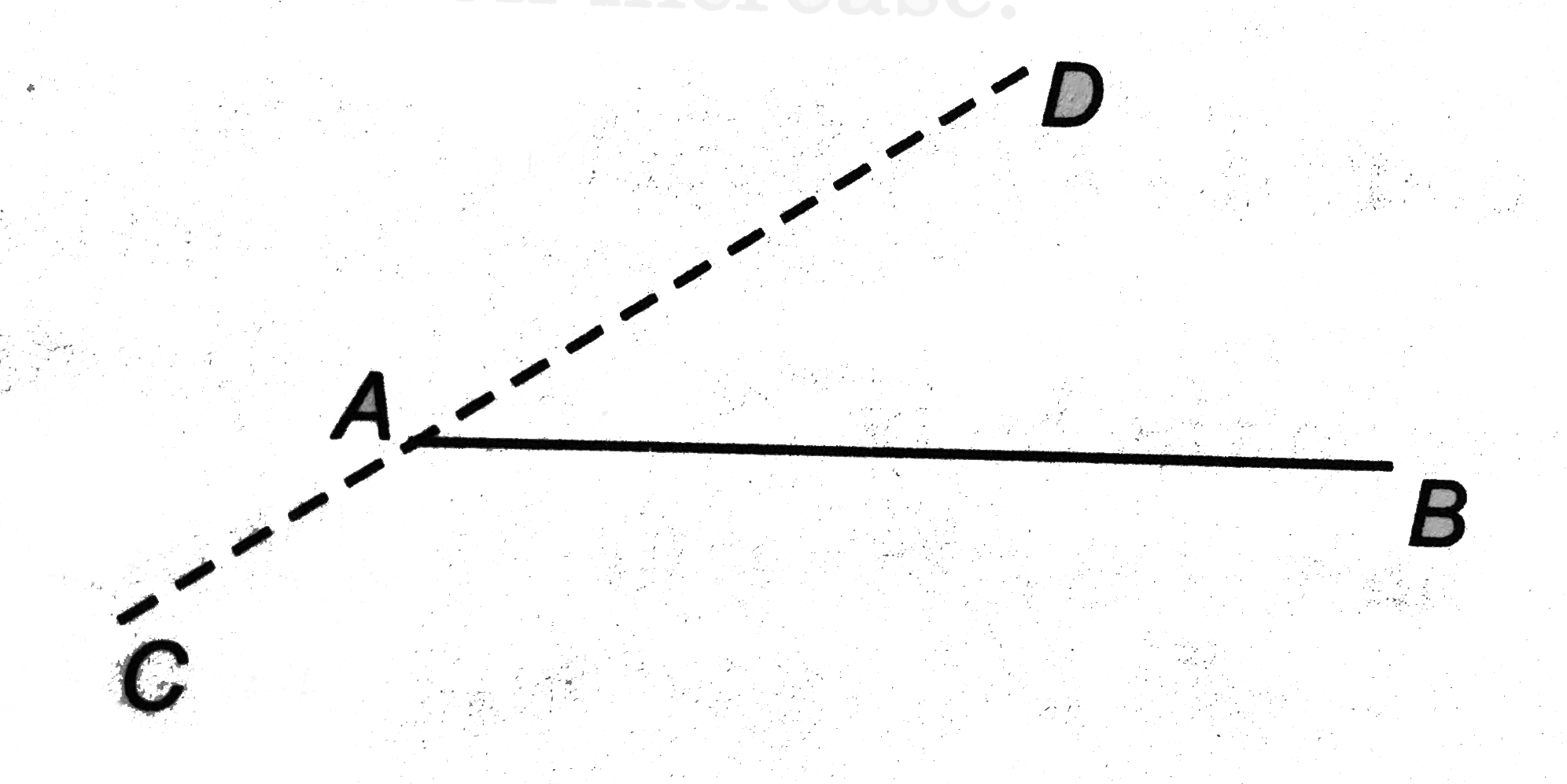By the theorem of perpendicular axes, if a body be in X-Z-plane then :-
Ix−Iy=Iz
Ix+Iz=Iy
Ix+Iy=Iz
Iy+Iz=Ix
The correct Answer is:B
To solve the problem using the theorem of perpendicular axes, we will follow these steps:
1. Understanding the Theorem of Perpendicular Axes:
- The theorem states that for a planar body lying in the X-Z plane, the moment of inertia about an axis perpendicular to the plane (Z-axis) is equal to the sum of the moments of inertia about the two axes lying in the plane (X and Y axes).
- Mathematically, this can be expressed as:
Iz=Ix+Iy
where Iz is the moment of inertia about the Z-axis, Ix is the moment of inertia about the X-axis, and Iy is the moment of inertia about the Y-axis.
2. Identifying the Axes:
- In this case, we have a body in the X-Z plane, meaning that the Y-axis is perpendicular to the plane formed by the X and Z axes.
3. Applying the Theorem:
- According to the theorem, we can write:
Iz=Ix+Iy
- This indicates that if we know the moments of inertia about the X and Y axes, we can find the moment of inertia about the Z-axis.
4. Conclusion:
- Therefore, the correct relationship according to the theorem of perpendicular axes is:
Ix+Iy=Iz
- This means that the moment of inertia about the Z-axis is equal to the sum of the moments of inertia about the X and Y axes.
Final Answer:
The correct statement according to the theorem of perpendicular axes for a body in the X-Z plane is:
Ix+Iy=Iz
- The theorem states that for a planar body lying in the X-Z plane, the moment of inertia about an axis perpendicular to the plane (Z-axis) is equal to the sum of the moments of inertia about the two axes lying in the plane (X and Y axes).
- Mathematically, this can be expressed as:
Iz=Ix+Iy
where Iz is the moment of inertia about the Z-axis, Ix is the moment of inertia about the X-axis, and Iy is the moment of inertia about the Y-axis.
- In this case, we have a body in the X-Z plane, meaning that the Y-axis is perpendicular to the plane formed by the X and Z axes.
- According to the theorem, we can write:
Iz=Ix+Iy
- This indicates that if we know the moments of inertia about the X and Y axes, we can find the moment of inertia about the Z-axis.
- Therefore, the correct relationship according to the theorem of perpendicular axes is:
Ix+Iy=Iz
- This means that the moment of inertia about the Z-axis is equal to the sum of the moments of inertia about the X and Y axes.
The correct statement according to the theorem of perpendicular axes for a body in the X-Z plane is:
Ix+Iy=Iz
Topper's Solved these Questions
- SYSTEM OF PARTICLES AND ROTATIONAL MOTIONBOOK - VMC MODULES ENGLISHCHAPTER - SYSTEM OF PARTICLES AND ROTATIONAL MOTIONEXERCISE - IMPECCABLE
56 Videos
- SYSTEM OF PARTICLES AND ROTATIONAL MOTIONBOOK - VMC MODULES ENGLISHCHAPTER - SYSTEM OF PARTICLES AND ROTATIONAL MOTIONEXERCISE - ENABLE
50 Videos
- SYSTEM OF A PARTICLES & ROTATIONAL MOTIONBOOK - VMC MODULES ENGLISHCHAPTER - SYSTEM OF A PARTICLES & ROTATIONAL MOTIONEXERCISE - IN-CHAPTER EXERCISE F
10 Videos
- UNITS, MEASUREMENTS & ERRORSBOOK - VMC MODULES ENGLISHCHAPTER - UNITS, MEASUREMENTS & ERRORSEXERCISE - IN - CHAPTER EXERCISE - B
10 Videos
Similar Questions
State theorem of perpendicular axes.
View SolutionBy the theorem of parallel axes:
View Solution
Assertion: There is a thin rod AB and a dotted line CD. All the axes we are talking about are perpendicular to plane . As we take different axes moving from A to D, moment of inertia of the rod may first decrease then increase.
Reason: Theorem of perpendicular axis cannot be applied here.
View SolutionState theorem of parallel axes.
View SolutionFind the length of the perpendicular drawn from the origin to the plane 2x - 3y+6z+21=0.
View SolutionFind the length of the perpendicular drawn from the origin to the plane 2x 3y+6z+21=0.
View SolutionFind the coordinates of the foot of the perpendicular drawn from the origin to the plane 2x−3y+4z−6=0.
View SolutionFind the intercepts of tehplane 3x+4y−7z=84 on the axes. Also find the length of perpendicular from origin to this plane and direction cosines of this normal.
View SolutionFind the co-ordinates of the foot of perpendicular and the length of perpendicular drawn from the point (2,3,7) to the plane 3x−y−z=7.
View SolutionIf a plane, intercepts on the coordinates axes at 8,4,4 then the length of the perpendicular from the origin to the plane is
View Solution
